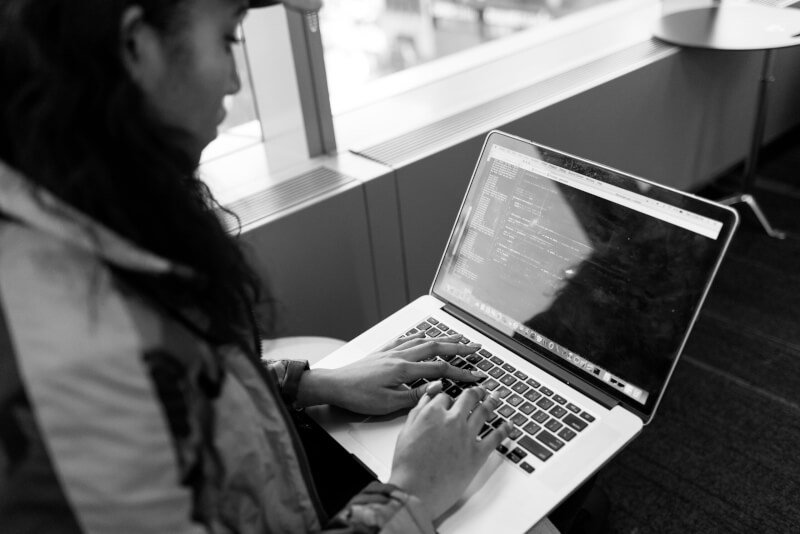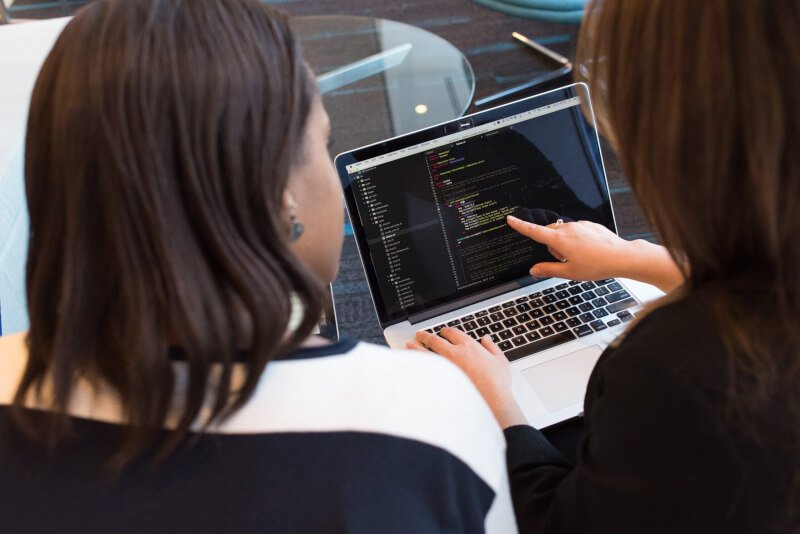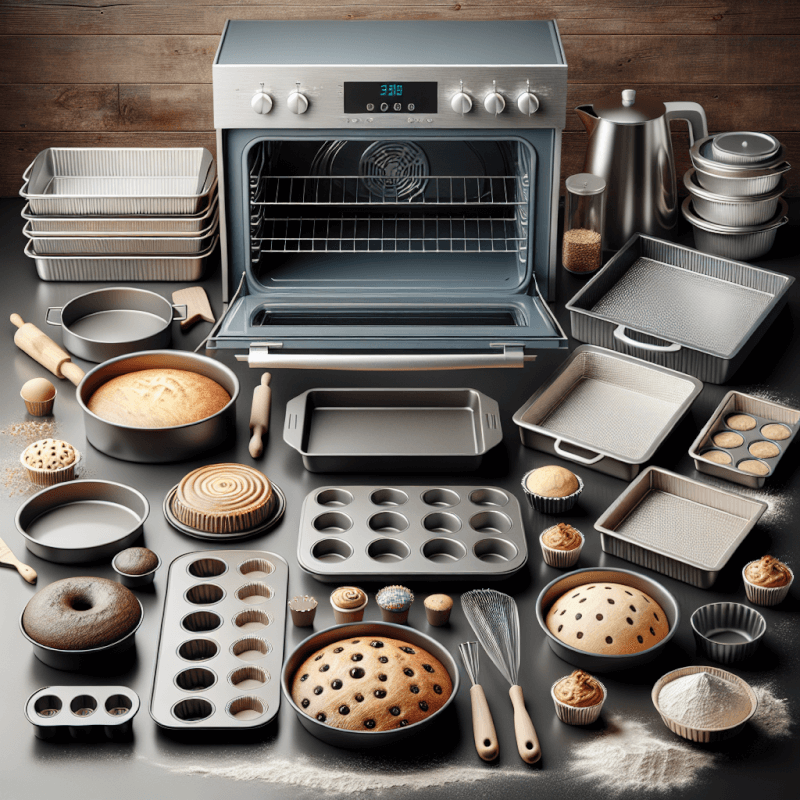If you love to bake and own a convection oven, then this article is a must-read for you! We will be discussing the exciting world of bakeware specially designed for convection ovens. From the perfect cookie sheets to versatile cake pans, we’ve got you covered. So get ready to elevate your baking game and create mouthwatering treats with the right bakeware for your convection oven. Let’s dive right in!
Types of Bakeware for Convection Oven
When it comes to baking in a convection oven, choosing the right bakeware is crucial for achieving delicious and evenly cooked results. With various options available, it can be overwhelming to determine which type of bakeware is best suited for your needs. In this article, we will explore the different types of bakeware for convection ovens, discuss the considerations when choosing bakeware, and provide recommendations for each type of bakeware.
Metal Bakeware
Metal bakeware is a popular choice among bakers due to its durability and excellent heat conductivity. It is typically made of aluminum or stainless steel and is known for its ability to distribute heat evenly, resulting in consistent baking. Aluminum bakeware heats up quickly and cools down rapidly, making it ideal for delicate baked goods that require precise temperature control. Stainless steel bakeware, on the other hand, is more durable and resistant to rust.
Advantages of Metal Bakeware
- Excellent heat conductivity for even baking.
- Lightweight and easy to handle.
- Durable and long-lasting.
- Quick heating and cooling properties.
- Ideal for achieving golden, crispy crusts.
Disadvantages of Metal Bakeware
- Can cause excessive browning on the bottom of baked goods.
- Requires careful monitoring to avoid overbaking.
- May react with acidic ingredients, resulting in a metallic taste.
- Not suitable for dishes that require slow, gradual heating.
Recommended Metal Bakeware for Convection Oven
- Half-size sheet pans: These versatile pans are a staple in every kitchen and are perfect for baking cookies, roasting vegetables, and toasting nuts.
- Round cake pans: Ideal for baking layer cakes, these pans ensure even heat distribution for perfectly baked cakes with a golden crust.
- Muffin tins: Perfect for baking muffins, cupcakes, and even individual quiches or meatloaves, muffin tins allow for consistent baking and easy removal of baked goods.
Glass Bakeware
Glass bakeware offers a unique set of advantages when it comes to baking in a convection oven. It is made from heat-resistant tempered glass and provides excellent heat retention, which can be beneficial for certain types of dishes. Glass bakeware is also known for its ability to evenly distribute heat throughout the dish, resulting in well-cooked and flavorful meals.
Advantages of Glass Bakeware
- Excellent heat retention for even cooking.
- Non-reactive with acidic ingredients.
- Retains the natural flavors and moisture of the food.
- Easy to monitor the browning and doneness of the dish.
- Can be used for both baking and serving.
Disadvantages of Glass Bakeware
- Longer preheating time compared to metal bakeware.
- More susceptible to thermal shock, which can cause cracking or shattering.
- Requires careful handling to prevent breakage.
- May result in longer baking times.
Recommended Glass Bakeware for Convection Oven
- Casserole dishes: Ideal for baking one-pot meals, casseroles or lasagnas, glass casserole dishes provide even heat distribution and easy serving.
- Pie dishes: If you’re craving a homemade pie with a flaky crust, glass pie dishes are an excellent choice. They ensure even browning and allow you to visually check the bottom of the crust.
- Baking dishes: Glass baking dishes are versatile and can be used for everything from roasting vegetables to baking chicken or fish.

Ceramic Bakeware
Ceramic bakeware is known for its beautiful appearance and ability to retain heat. Made from clay and other natural materials, ceramic bakeware offers a decorative touch to your kitchen while providing excellent heat distribution for even baking.
Advantages of Ceramic Bakeware
- Retains heat well, ensuring your dishes stay warm for longer.
- Provides a stylish presentation for serving.
- Resistant to thermal shock.
- Cooks food evenly for consistent results.
- Non-reactive with ingredients, preserving the flavors of your dishes.
Disadvantages of Ceramic Bakeware
- Heavier and more fragile compared to other types of bakeware.
- Longer preheating time.
- Tends to retain stains and odors.
- May result in slower cooking times.
Recommended Ceramic Bakeware for Convection Oven
- Baking dishes: Whether you’re making a casserole or a baked pasta dish, ceramic baking dishes are an excellent choice. They hold heat well, ensuring even cooking throughout.
- Pie plates: Ceramic pie plates provide a rustic charm to your baked goods and allow for beautiful, evenly baked pies with a crispy crust.
- Ramekins: If you enjoy individual servings, ceramic ramekins are perfect for baking custards, crème brûlées, or individual pot pies.
Silicone Bakeware
Silicone bakeware has gained popularity in recent years due to its flexibility, non-stick properties, and ease of use. Made from food-grade silicone, this type of bakeware offers a wide range of advantages for convection oven baking.
Advantages of Silicone Bakeware
- Non-stick surface for easy release of baked goods.
- Flexible and easy to bend, making it effortless to remove baked goods.
- Lightweight and easy to store.
- Heat-resistant and can withstand extreme temperatures.
- Can be used in the freezer, microwave, and dishwasher.
Disadvantages of Silicone Bakeware
- Requires additional support for stability.
- May result in longer baking times.
- Cannot be used on direct heat sources such as stovetops.
- Prone to absorbing odors from strong-smelling foods.
Recommended Silicone Bakeware for Convection Oven
- Muffin pans: Silicone muffin pans make it a breeze to remove muffins or cupcakes without sticking. They are also easy to clean and store.
- Baking mats: Silicone baking mats provide a non-stick surface for cookies, pastries, and other baked goods. They can be reused multiple times and eliminate the need for parchment paper.
- Bundt pans: Silicone bundt pans allow for effortless removal of your beautifully shaped cakes without the risk of them sticking to the pan.

Bakeware Maintenance and Care
Proper maintenance and care of your bakeware are essential for ensuring its longevity and continued performance. Here are some tips to keep in mind:
Proper Cleaning Techniques
- Follow the manufacturer’s instructions for cleaning your bakeware.
- Hand wash your bakeware whenever possible to avoid damaging the non-stick coating or warping the shape.
- Use non-abrasive cleaning agents and avoid using metal scrubbers, as they can scratch the surface.
Seasoning
- Some types of bakeware, such as cast iron or stoneware, may require seasoning before use. Follow the instructions provided by the manufacturer to season your bakeware properly.
Storage
- To save space, stack bakeware carefully, placing a layer of parchment paper or a soft cloth between each piece to prevent scratches.
- Avoid storing heavy items on top of your bakeware to prevent warping or damage.
Common Mistakes to Avoid
- Avoid using metal utensils on non-stick bakeware, as they can scratch the surface.
- Do not use harsh cleaning agents or abrasive materials, as they can damage the bakeware.
- Avoid extreme temperature changes, such as transferring hot bakeware directly to a cold surface or placing cold bakeware into a preheated oven.
Tips for Baking with Bakeware in Convection Oven
Baking in a convection oven can produce exceptional results when done correctly. Here are some tips to help you achieve the best baking experience:
Adjusting Time and Temperature
- Reduce the baking temperature recommended in recipes by 25 degrees Fahrenheit when using a convection oven, as the fan helps to circulate the heat more efficiently.
- Begin checking for doneness a few minutes earlier than the recommended baking time due to the accelerated cooking process in a convection oven.
Using Parchment Paper
- Use parchment paper to line baking sheets and pans to prevent sticking and promote easy cleanup.
Positioning Bakeware
- Allow enough space between baking dishes for proper air circulation. This ensures even baking and prevents overcrowding.
Rotating Bakeware
- If your convection oven has uneven heat distribution, rotate the bakeware halfway through the baking process to ensure even browning.
Avoiding Overcrowding
- Avoid overcrowding the bakeware, as this can affect the circulation of hot air, resulting in uneven cooking and potential for undercooked or mushy dishes.
Using Oven Thermometer
- Invest in an oven thermometer to ensure the accuracy of the temperature settings in your convection oven. This will help you achieve more precise baking results.
Preheating
- Preheat your convection oven before placing the bakeware inside. This ensures that the oven is at the desired temperature and promotes even baking.
Using Oven Racks Wisely
- Adjust the oven racks to the appropriate position based on the size and shape of your bakeware. This allows for optimal heat distribution and prevents excessive browning on the bottom.
Utilizing Convection Fan Settings
- Some convection ovens offer adjustable fan settings. Experiment with different settings to find the one that works best for your specific recipe.
Monitoring Baking Process
- Keep a close eye on your baked goods as they cook in a convection oven. The accelerated cooking time means that the dishes can finish baking sooner than expected.

Best Practices for Convection Oven Bakeware
To ensure the longevity and performance of your bakeware, here are some best practices to keep in mind:
Preheating the Bakeware
- Preheat metal and glass bakeware with your convection oven to allow for even heat distribution and consistent baking.
Avoiding Abrasive Cleaning Methods
- Use gentle cleaning agents and non-abrasive materials to clean your bakeware. Harsh chemicals and abrasives can damage the surface and non-stick properties.
Using the Right Utensils
- Use silicone, wooden, or nylon utensils when working with non-stick bakeware to avoid scratching the surface.
Avoiding Extreme Temperature Changes
- Avoid subjecting your bakeware to extreme temperature changes, as this can cause warping or damage. Allow your bakeware to cool down before placing it in contact with a cold surface.
Properly Greasing the Bakeware
- Grease your bakeware properly to ensure easy release of your baked goods. Use a cooking spray, butter, or oil, depending on the recipe’s requirements.
Checking for Proper Air Circulation
- Before baking, ensure that the vent openings in your convection oven are clear and unobstructed. This allows for proper air circulation and even baking.
Conclusion
When it comes to choosing bakeware for your convection oven, considering factors like material, heat distribution, and non-stick properties is crucial. With a wide range of options available, including metal, glass, ceramic, and silicone bakeware, you can find the perfect tools to suit your baking needs. Remember to properly maintain and care for your bakeware to ensure its longevity and continued performance. By following the tips and best practices outlined in this article, you’ll be well on your way to achieving delicious and evenly baked treats in your convection oven. Happy baking!



